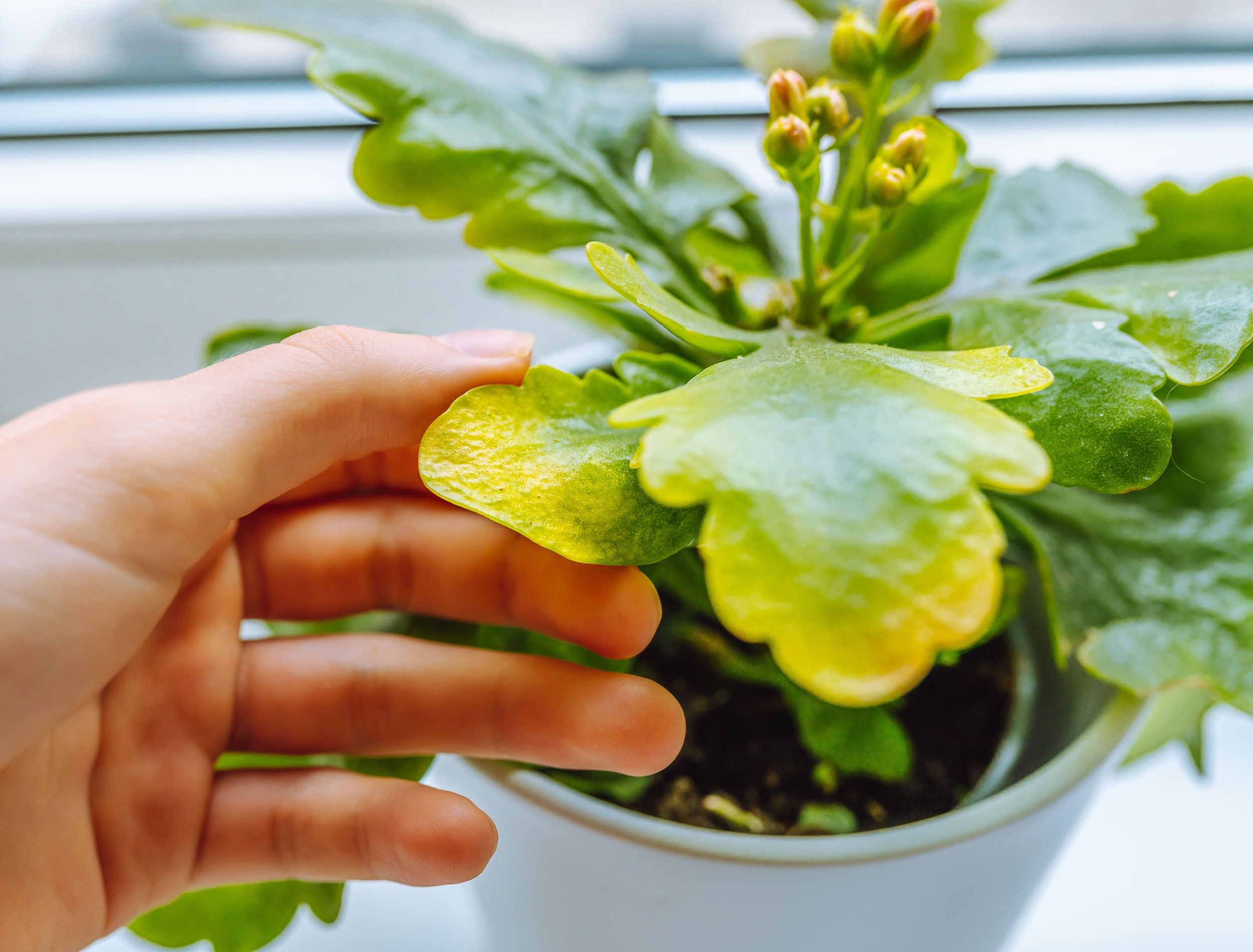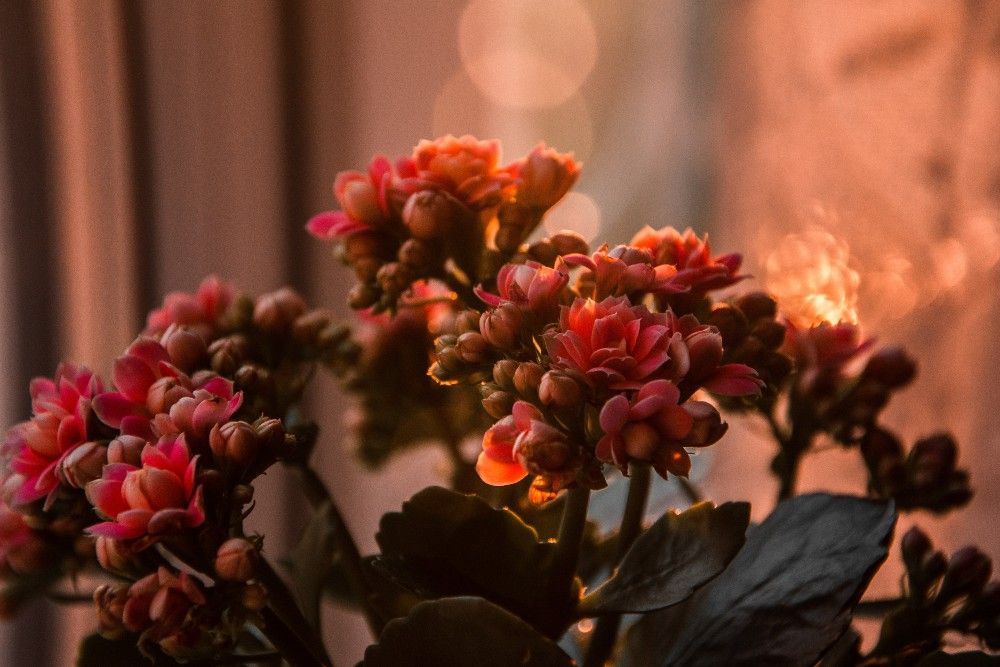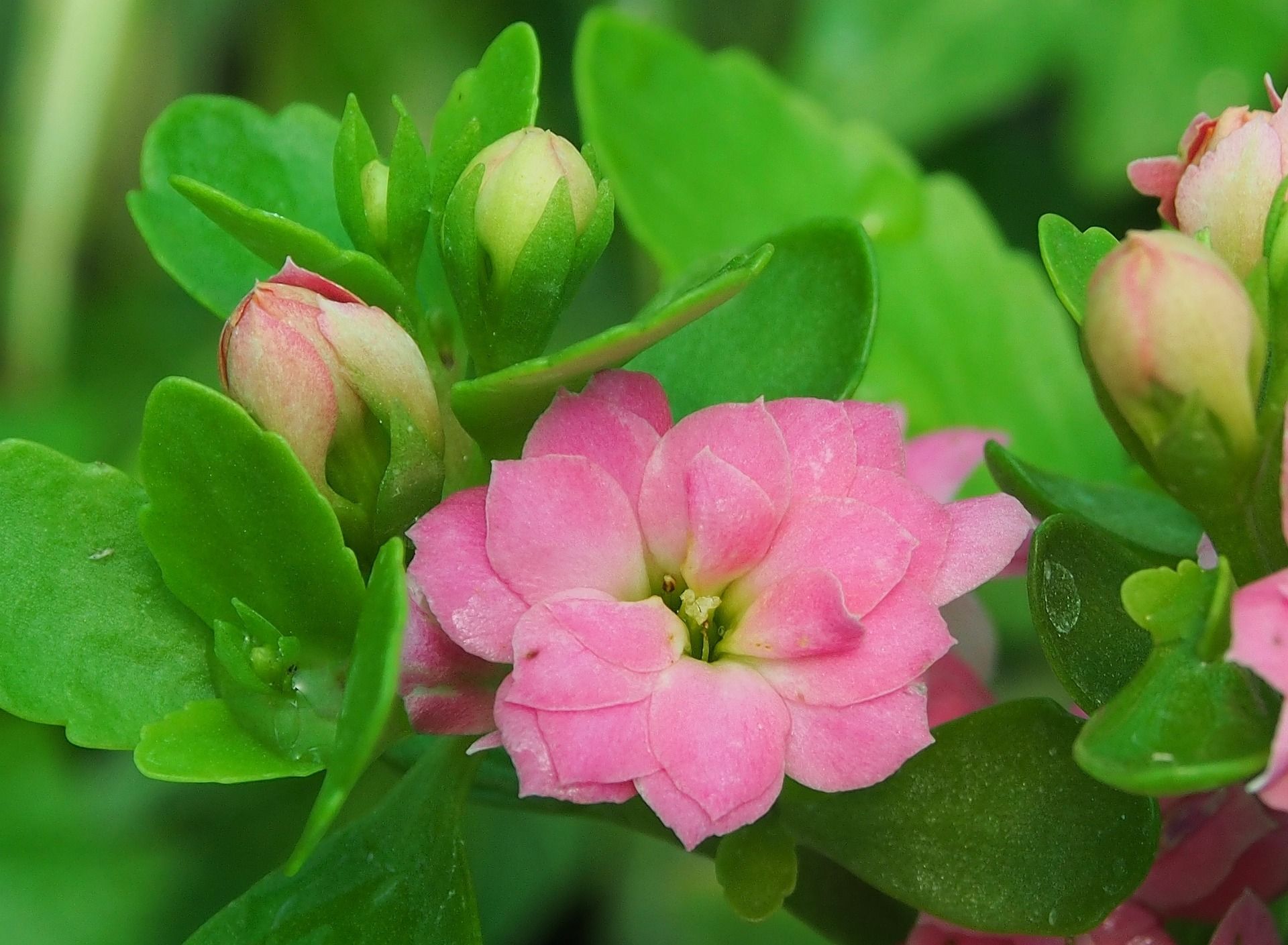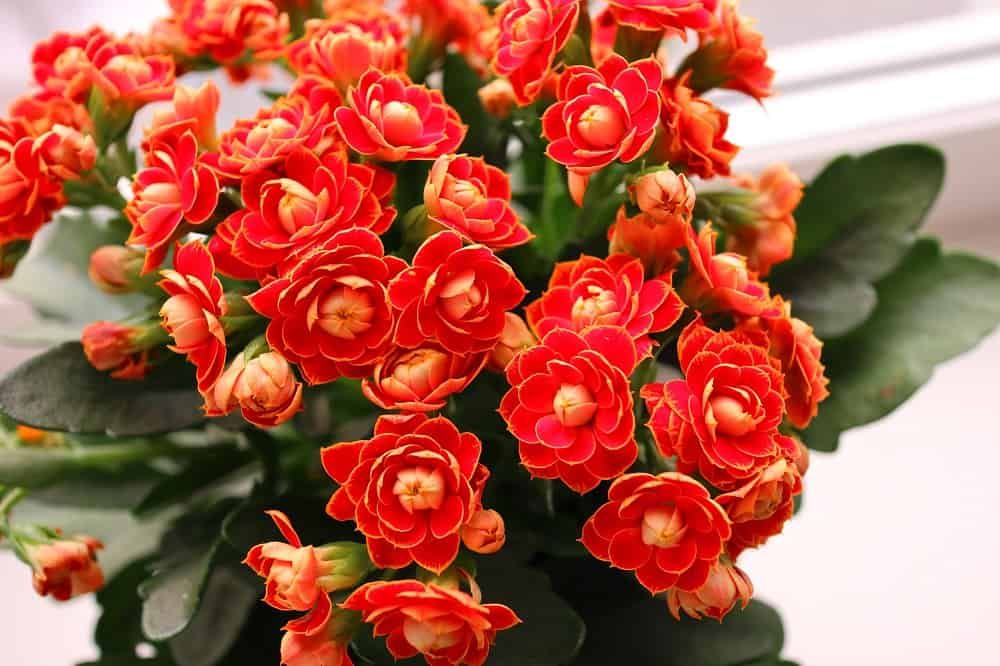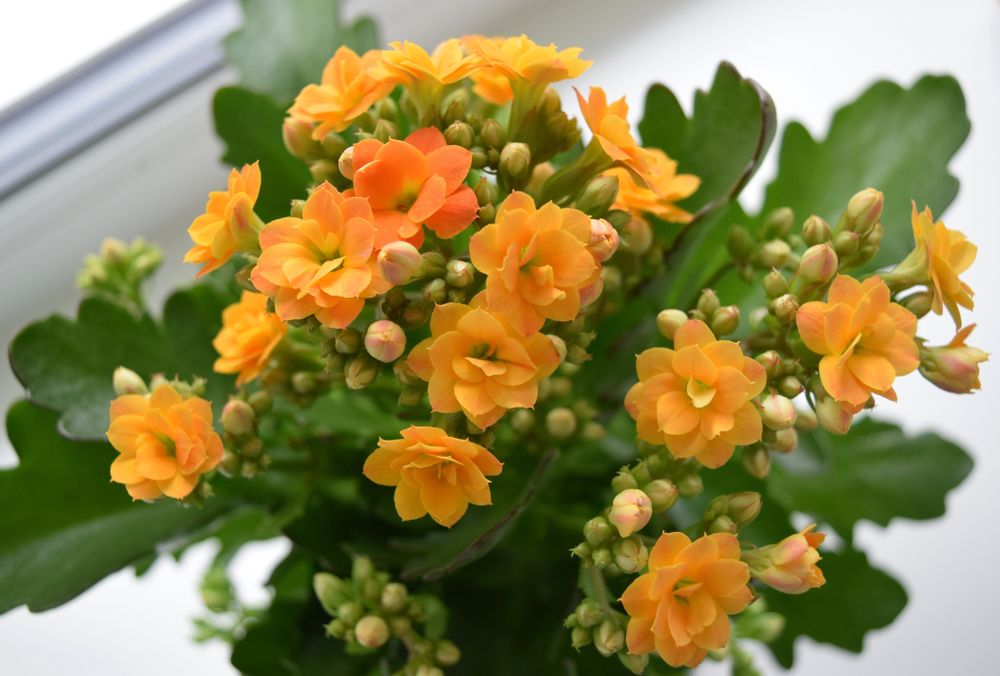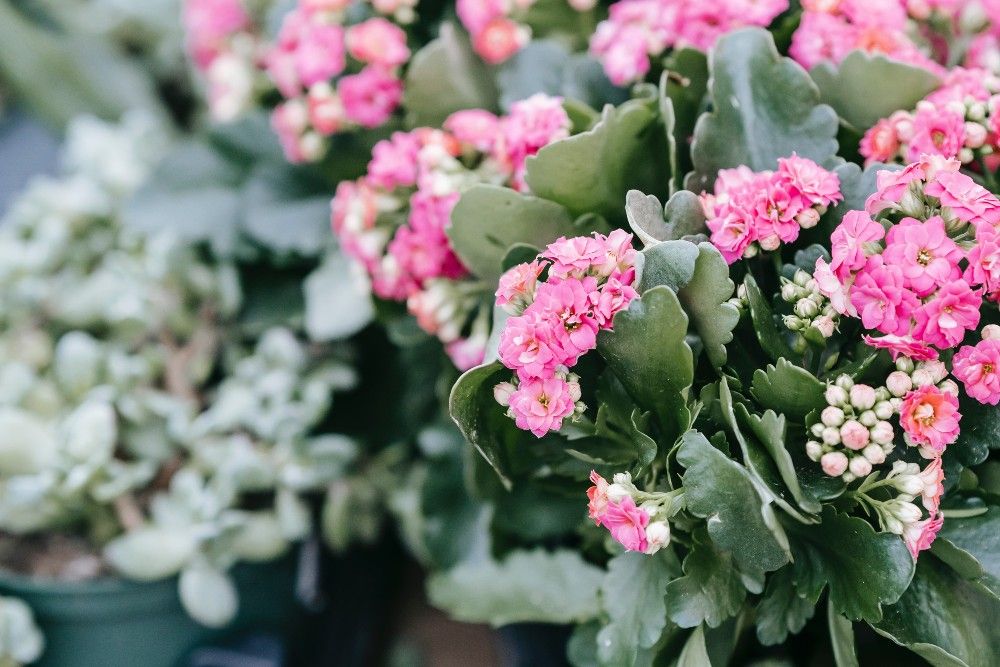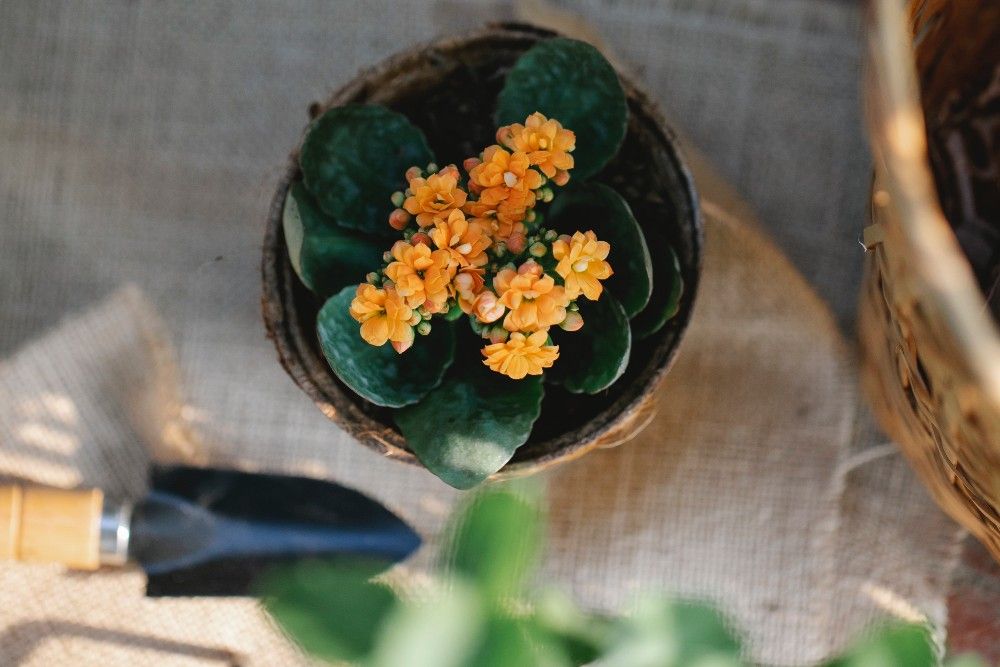Kalanchoe is a popular indoor plant with many varieties and vibrant colors. Its succulent foliage is easy to care for and adds a beautiful accent to a home or office space. But, since they are tropical plants, they need special attention to ensure they flourish indoors.
Caring for your kalanchoe indoors doesn't need to be a daunting task. But there are many considerations when setting up the perfect environment for your kalanchoe. Here are seven tips to help you give the optimal care for your plant, so it thrives in its new home!
Choosing the Right Potting Mix
Image credits: By luckat via Shutterstock
When it comes to choosing the perfect potting mix for your kalanchoe, select a well-draining, light, and airy mixture. A quality blend of 40 percent perlite and 60 percent peat moss is ideal as it helps keep your plant healthy and creates an environment that promotes vigorous root growth.
This type of soil provides the perfect combination of drainage, aeration, nutrition, and moisture retention for your kalanchoe. So, avoid using soil from outside, as it's too dense or harbors pests or disease-causing organisms.
Placing Your Kalanchoe in the Right Environment
Image credits: Irina Iriser via Pexels
To ensure your kalanchoe thrives in its new home, place it in a spot that gets plenty of sunlight throughout the day. Choose an area near a window or other light source where the plant gets bright, but not direct sunlight. Avoid putting your kalanchoe in direct sunlight as it causes the leaves to burn or dry out quickly.
Additionally, if placed in too much shade, it is likely to become spindly as it searches for more light. Turn your plant occasionally so that all sides receive an equal amount of light on all sides.
Lastly, avoid placing your kalanchoe in direct drafts. This causes stress on the plant.
Watering Tips for Keeping Your Kalanchoe Happy
Image credits: s-ms_1989 via Pixabay
Aim to provide you plant with a thorough watering when the soil has become slightly dry to the touch.
Overwatering is one of the biggest mistakes people make with a potted kalanchoe. It causes root rot and even kills your plant. Empty excess water from the tray beneath your pot after each watering. This ensures that no moisture remains and that your kalanchoe's roots are safe from water logging damage.
Fertilizing Your Kalanchoe
Image credits: Ivanka I via Shutterstock
Fertilizing your kalanchoe plants helps keep them looking their best and encourages strong, healthy growth. To ensure your plants get the nutrition they need, fertilize once a month during their active growing season with a well-balanced fertilizer.
Alternatively, use one higher in phosphorus to stimulate more blooms. Applying fertilizer at the right time of year also helps your plants reach their full potential. Try applying it in spring and summer when temperatures are warmer and days are longer, as this is when plants put on most of their growth.
Ensuring Proper Temperature for Blooms
Image credits: Dmytro Dzhyrma via Shutterstock
If you're growing kalanchoe indoors, ensure proper temperature conditions for blooming. The ideal temperatures should be around 60 degrees Fahrenheit at night and 70 degrees Fahrenheit during the day. Be aware, fluctuations of temperatures inhibit proper flowering.
To ensure blooming, expose the plant to six weeks of 14-hour darkness per day. During this period, water, and fertilize less than usual in order to promote successful blossoms. When done correctly, expect flowering within four months after exposure.
Troubleshooting Common Problems
Image credits: Uriel Mont via Pexels
Overwatering your plant leads to rot, while insects like aphids and mealybugs infest the foliage. To avoid these issues, have well-draining soil for your plants, drainage holes in the pot, and check for signs of insect damage regularly.
If you notice signs of root rot -- such as wilting or discolored leaves -- reduce watering frequency immediately. If the issue persists, consider repotting with fresh soil mix.
When dealing with insects on your plant, it's best to isolate the affected plants right away. Control mealybugs by washing them off with alcohol. For aphids, handpick them or wipe down your plant with soapy water. Organic insecticides, such as neem oil and backing soda also work well.
Propagating Your Kalanchoe
Image credits: Gary Barnes via Pexels
Propagating kalanchoe from stem cuttings is a breeze. All you need is a pot, pruning shears, propagation mix, and your plant.
Start by selecting the right pot. One that's 6 to 8 inches in diameter is ideal. Fill it with a rooting medium of 50 percent perlite and 50 percent peat moss. For the best results, choose leaves that have no flowers and that are 2 to 3 inches long. Gently cut off the bottom leaves from your cuttings and allow them to callus for several days before planting them into the soil.
Now, place your pot in a bright location with indirect light. For extra humidity, cover your pot with a large plastic bag. This keeps moisture in and helps promote faster root development. After two to three weeks, the roots have established, and it is now safe to transplant your kalanchoe.
Get Growing!
Caring for your kalanchoe indoors doesn't have to be difficult. With these seven tips, you ensure your kalanchoe stays healthy and vibrant for years to come! Remember to choose the right potting mix, place it in a spot with plenty of indirect sunlight, water sparingly, and fertilize occasionally. With some TLC, your kalanchoe will bring beauty and life into your home for many years to come.
And if you have questions or thoughts to share on how you take care of your kalanchoe, leave a comment below and share with family and friends!

